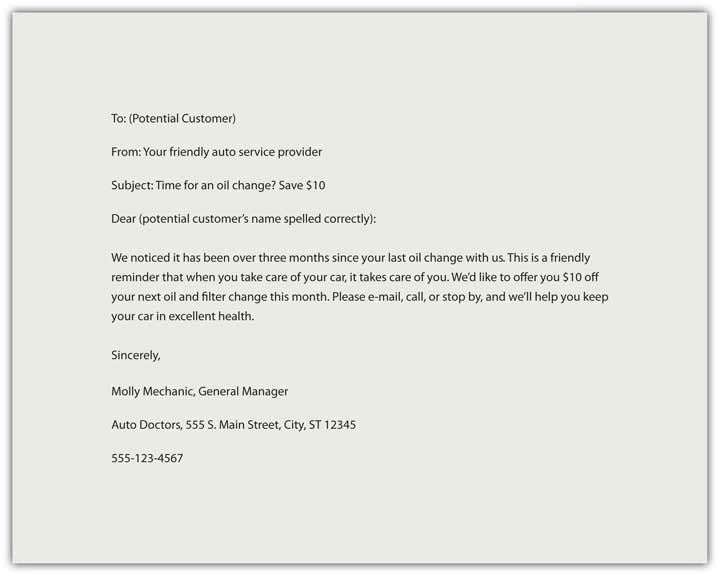29 Persuasive messages
Melissa Ashman
In general, appeals to emotion pique curiosity and get our attention, but some attention to reason and facts should also be included. That doesn’t mean we need to spell out the technical manual on the product on the opening sale message, but basic information about design or features, in specific, concrete ways can help an audience make sense of your message and the product or service. Avoid using too many abstract terms or references, as not everyone will understand these. You want your persuasive message to do the work, not the audience.
Typical format of a persuasive message
The four parts of a persuasive message are shown in Table 4.7.1.
Table 4.7.1. Four parts of a persuasive message
| Part | Description |
|---|---|
| Attention statement (or hook) | Use humour, novelty, surprise, an unusual fact, or a question to get the attention of your audience. |
| Introduction | Build interest by appealing to your audience’s needs and wants and include a purpose statement to set up expectations. |
| Explanation | Establish credibility and build your relationship with your audience, discuss attractive features, and compare with competitors addressing concerns or potential questions before they are even considered. |
| Call to action | Sum it up and offer solution steps or calls to action, motivating your audience to take the next step. The smaller the step, the more likely your audience will comply. Set up your audience for an effective closing. It should be clear what your audience should do, by when, and how. |
Your persuasive message will compete with hundreds of other messages your audience receives and you want it to stand out (Price, 2005). One effective way to do that is to make sure your attention statement (or hook) and introduction clearly state how your audience will benefit. For example:
- Will the product or service save time or money?
- Will it make them look good?
- Will it entertain them?
- Will it satisfy them?
Regardless of the product or service, the audience is going to consider first what is in it for them. A benefit is what the audience gains by doing what you’re asking them to do and this is central to your persuasive message. They may gain social status, popularity, or even reduce or eliminate something they don’t want. Your persuasive message should clearly communicate the benefits of your product or service (Winston & Granat, 1997).
Strategies for persuasive messages
Your product or service may sell itself, but you may want to consider using some strategies to help ensure your success:
- Start with your greatest benefit. Use it in the headline, subject line, caption, or attention statement. Audiences tend to remember the information from the beginning and end of a message, but have less recall about the middle points. Make your first step count by highlighting the best feature first.
- Take baby steps. Promote, inform, and persuade on one product or service at a time. You want to hear “yes,” and if you confuse the audience with too much information, too many options, steps to consider, or related products or service, you are more likely to hear “no” as a defensive response as the audience tries not to make a mistake. Avoid confusion and keep it simple.
- Know your audience. The more background research you can do on your audience, the better you can anticipate their specific wants and needs and tailor your persuasive message to meet them.
- Lead with emotion, and follow with reason. Gain the audience’s attention with drama, humour, or novelty and follow with specific facts that establish your credibility, provide more information about the product or service, and lead to your call to action.
These four steps can help improve your persuasive messages. Invest your time in planning and preparation, and consider the audience’s needs as you prepare your messages. Figure 4.7.1 provides an example of a persuasive email message.

Figure 4.7.1 Sample persuasive email
In this message, the writer has combined emotion and reason and reinforced their credibility in order to create interest in their service, hopefully leading to a sale.

